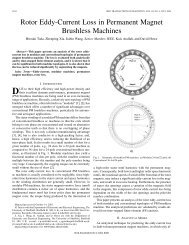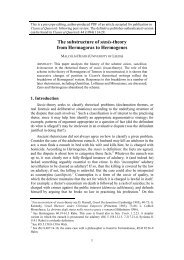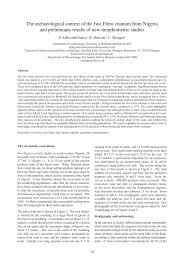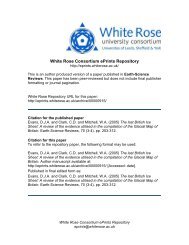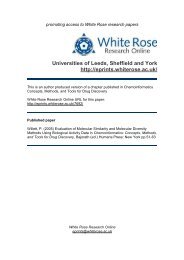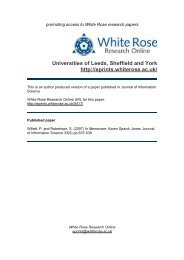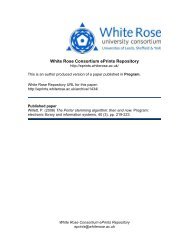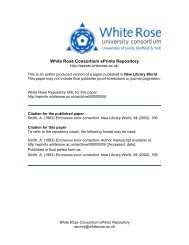Download (3223Kb) - White Rose Research Online
Download (3223Kb) - White Rose Research Online
Download (3223Kb) - White Rose Research Online
Create successful ePaper yourself
Turn your PDF publications into a flip-book with our unique Google optimized e-Paper software.
• the ‘comprehensive’ approach, uising both DSS and own guidance<br />
(adopted by 50 per cent of authorities),<br />
• the ‘independent’ approach, pnncipally using own policies (19 per<br />
cent),<br />
• the DSS-based’ approach. principally using the official guidance (23<br />
per cent),<br />
• the ‘case—based’ approach, ~inng neither form of guidance (nine per<br />
cent)<br />
Using this typology the findings Irons the survey included the following<br />
• Scottish authorities rely on DSS guidance the most, London Boroughs<br />
and Welsh authorities the least,<br />
• the independent approach is used nuost in London,<br />
• more muerropolatani authorities adopt the coniprehensi~eapproach than<br />
other authonties<br />
The scope arid content of the docunisentation used by local authorities iii<br />
deciding applications varied eniorinously Particularly striking was the<br />
number of authorities who require applicants to complete detailed<br />
expenditure formiss as part oftheir application Some authorities had devised<br />
scoring systenis for assessing applications<br />
Housing Benefit claimants can ask a local authority to supply them with<br />
a prt-reriancy deternri,,cittoii giving an iiidication of the likely amount of<br />
benefit they would receive if they took on a particular tenancy The<br />
large majority olauthonties take pre-tenancy deteniunations into account<br />
when deciding applications for e~ceptionsalhardship paymcnts, although<br />
the existence ofa determination would not be a sufficient reason to reject<br />
an application<br />
Outcomes ofapplkations for C)fnhe 305 local authorities in the survey, 288 authorities supplied figures<br />
exceptionsab hardship payilients for the number of exceptional hardship payments awarded in 1997/98<br />
Of these, 248 were also able to supply figures for the number of<br />
unsuccessfuil applications Aggregating the responses from these latter<br />
authorities shows that 9,483 exceptional hardship pavnients were made<br />
from 22,034 applications, an overall success rate of 43 per cent The<br />
mean number of payments iii these authorities was 38 within a range of<br />
between one and 664<br />
One in five authorities were making some relatively high weekly payinenl~,<br />
in excess of~50 and a small number had niiade payments of over LlU0<br />
per week However almost all authorities reported ar’er~~eweekly<br />
payments ofL3O or less Exceptional hardship payment cases then tended<br />
to fall into one of nvo types cases where the nature of the exceptional<br />
hardship was considered teinporaiy, which would be removed when the<br />
claimant found more suitable accommodation, and cases where the nature<br />
of the exceptional hardship was considered permanent and which couild<br />
not be alleviated by a move to other accon’unodation<br />
3




